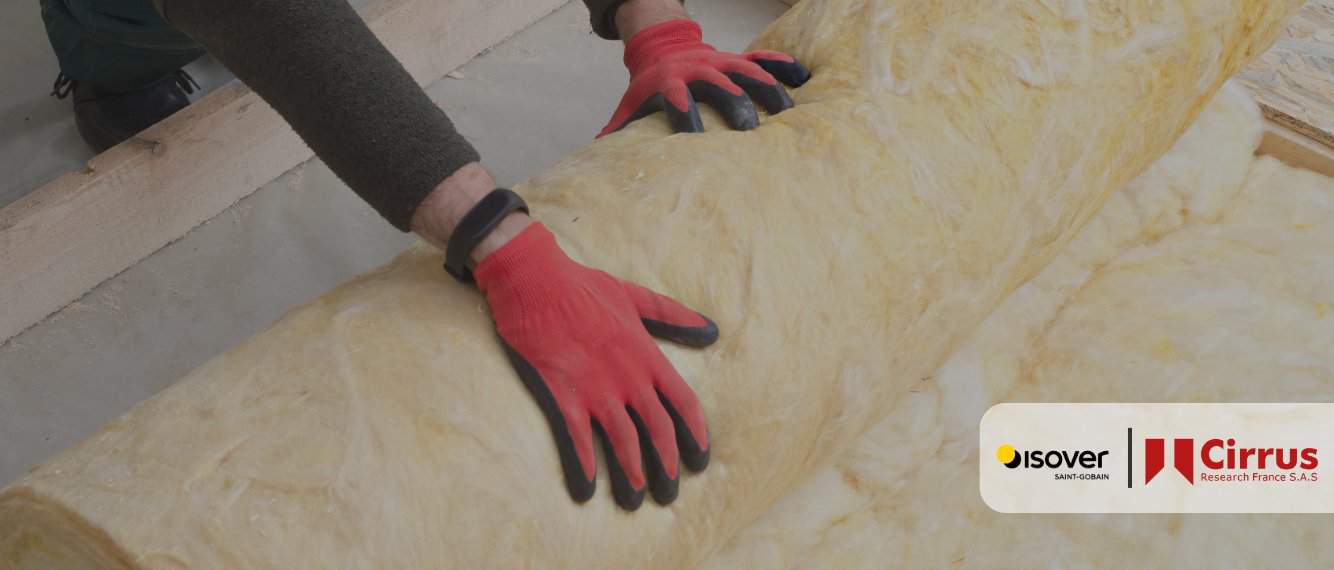The doseBadge? It’s really easier than the old instruments. We are equipped with 5 sensors and it allows us to test 5 people at the same time; either in the same GHE, i.e. homogeneous exposure group; or in 5 different groups at the same time, then it allows us to carry out the measurements much more quickly. Our company has a standard called NOS, which requires us to take 6 measurements per GHE. We had more than 15 groups to measure: with our old equipment, it would have taken us months! This time we were able to work much more quickly. Finally, even for doseBadge holders, it was much more practical…
Can you tell us about the ISOVER Industrial Research Centre in Rantigny?
The mission of the Rantigny Industrial Research Centre is to develop new products and processes, including full-scale development and technical assistance to factories. All the techniques and know-how are then transferred to the factory.
What is ISOVER’s policy on daily exposure?
Saint Gobain was already applying the 85dB well before the decree.
Do you make it compulsory to wear protection above 80dB?
When collective protection is not appropriate, then yes for individual protection. The approach is to look at noise reduction at source. We have in-house expertise in acoustics. If there’s nothing we can do to reduce it, then we use individual protection, from 80dB upwards.
How did you make workers aware of noise?
For the last 6 years, we’ve been hammering away at it at every visit, with the result of the audiogram as a back-up. In addition, the company doctor has been promoting the wearing of hearing protection.
How do you choose hearing protection?
The protection depends on the workstation. We analyse the workstations, and then we analyse the most comfortable protection. We test moulded plugs and helmets when we can’t do otherwise, for example in very noisy areas. We don’t have a standard for protection, it’s a question of adapting to specific situations.
Do you use a sound level meter and frequencies for this?
No, we do individual dosimetry and then noise mapping. The latter is done using the doseBadge. We had started to do this with a sound level meter, but we found that the measurements were not very representative because they were really spotty. So we came up with the idea of using the doseBadge for 8-hour mapping. To do this, we attached the dosebadges to a camera stand and placed them in work areas and traffic zones.
This is a very interesting method!
Because the sound level meter is very punctual, for example, when the cutter is running, the noise level is very high, and finally we realised that with the doseBadges recording over 8 hours, the average noise is lower because the average noise of a whole day takes into account all the activities.
How do you manage noise exposure in your workshops?
The cockpit is located in a control room, and most of the time the operator is in this room, which is insulated and soundproof. However, they do carry out occasional driving operations wearing appropriate personal protective equipment.
What is your experience of noise measurement?
In 1989 we had a training course on noise measurement with the occupational physician, organised by the Saint Gobain company because the regulations had started to change. We took noise measurements using a traditional dosimeter.
“This time we were able to work much more quickly. Finally, even for doseBadge holders, it was much more practical.”
How does the doseBadge compare with your old equipment?
It’s really easier. Firstly, as we’re equipped with 5 sensors, we can test 5 people at the same time, either in the same GHE (homogeneous exposure group) or in 5 different groups at the same time, and secondly, we can take measurements much more quickly. Our company has a standard called NOS, which requires us to take 6 measurements per GHE. We had more than 15 groups to measure: with our old equipment, it would have taken us months! This time we were able to work much more quickly. Finally, even for doseBadge holders, it was much more practical.
In the field, the doseBadge is really forgotten by the workers?
Yes, no wires lying around, no box to put in the pocket, it’s really very practical, people have accepted it very well, better than the old dosimeters, which we sometimes had to adapt to the temples of our glasses!
Before, there was a certain amount of inertia, but now, with the doseBadge, we can keep up with reality, and two days later we have the first results, so we can react accordingly and suggest appropriate protection measures. It’s very easy to retrieve the data recorded by the doseBadges in the software: as soon as you remove the doseBadge, you have the result within a quarter of an hour.
We’ve just developed a new feature in the software: it allows you to correlate the noise graph with activities in order to detect precisely the workstations most at risk. Do you think this new feature could be useful to you?
Yes, we have people in maintenance, for example, who change tasks. This could help us to better understand which tasks are the source of nuisance.
In terms of equipment maintenance, have you been satisfied with Cirrus?
Yes! The recalibration took 8 days, I was even surprised that it was so quick to send a doseBadge to England.



